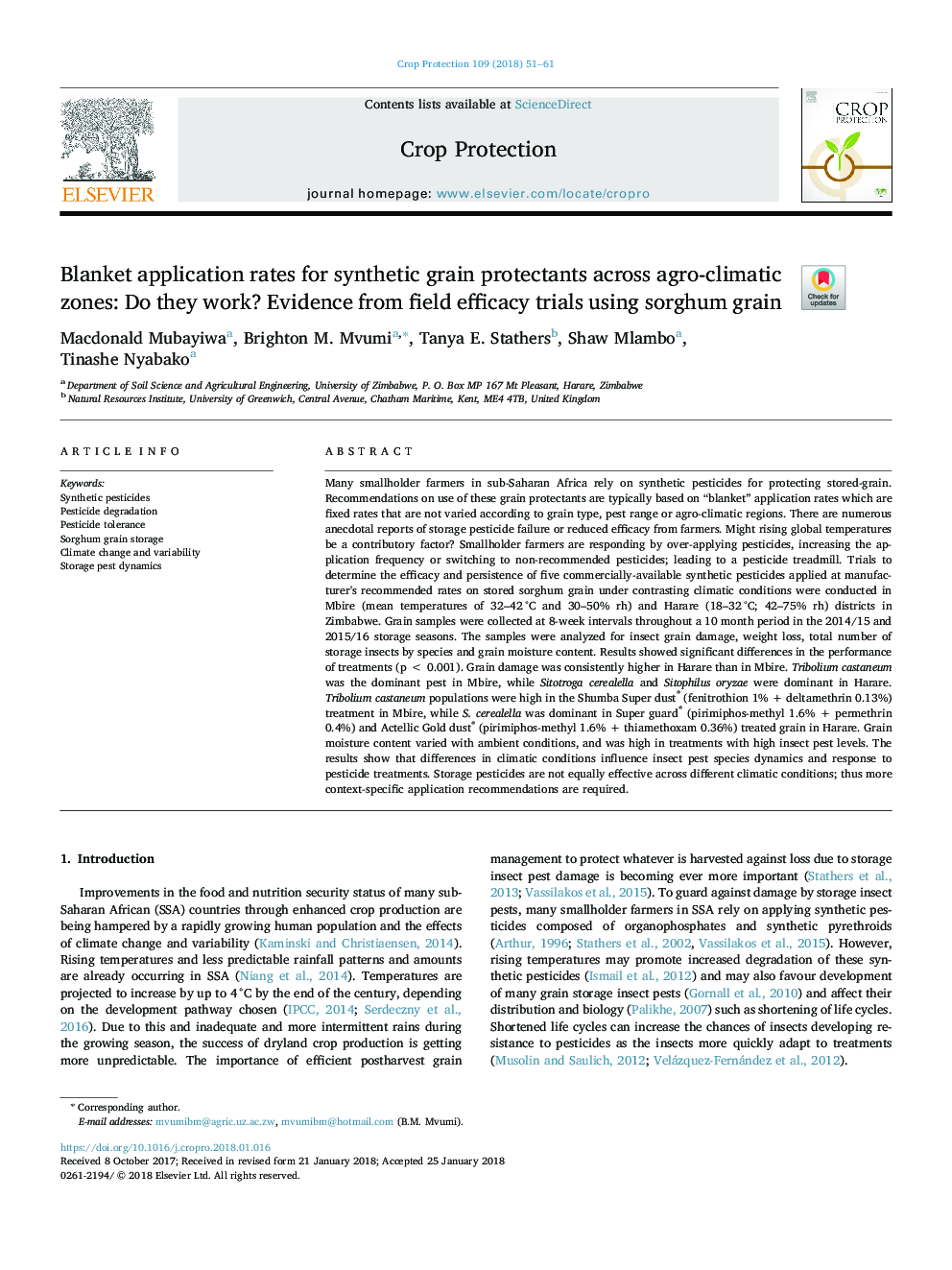| Article ID | Journal | Published Year | Pages | File Type |
|---|---|---|---|---|
| 8878136 | Crop Protection | 2018 | 11 Pages |
Abstract
Many smallholder farmers in sub-Saharan Africa rely on synthetic pesticides for protecting stored-grain. Recommendations on use of these grain protectants are typically based on “blanket” application rates which are fixed rates that are not varied according to grain type, pest range or agro-climatic regions. There are numerous anecdotal reports of storage pesticide failure or reduced efficacy from farmers. Might rising global temperatures be a contributory factor? Smallholder farmers are responding by over-applying pesticides, increasing the application frequency or switching to non-recommended pesticides; leading to a pesticide treadmill. Trials to determine the efficacy and persistence of five commercially-available synthetic pesticides applied at manufacturer's recommended rates on stored sorghum grain under contrasting climatic conditions were conducted in Mbire (mean temperatures of 32-42â¯Â°C and 30-50% rh) and Harare (18-32â¯Â°C; 42-75% rh) districts in Zimbabwe. Grain samples were collected at 8-week intervals throughout a 10 month period in the 2014/15 and 2015/16 storage seasons. The samples were analyzed for insect grain damage, weight loss, total number of storage insects by species and grain moisture content. Results showed significant differences in the performance of treatments (pâ¯<â¯0.001). Grain damage was consistently higher in Harare than in Mbire. Tribolium castaneum was the dominant pest in Mbire, while Sitotroga cerealella and Sitophilus oryzae were dominant in Harare. Tribolium castaneum populations were high in the Shumba Super dust® (fenitrothion 1% + deltamethrin 0.13%) treatment in Mbire, while S. cerealella was dominant in Super guard® (pirimiphos-methyl 1.6% + permethrin 0.4%) and Actellic Gold dust® (pirimiphos-methyl 1.6% + thiamethoxam 0.36%) treated grain in Harare. Grain moisture content varied with ambient conditions, and was high in treatments with high insect pest levels. The results show that differences in climatic conditions influence insect pest species dynamics and response to pesticide treatments. Storage pesticides are not equally effective across different climatic conditions; thus more context-specific application recommendations are required.
Related Topics
Life Sciences
Agricultural and Biological Sciences
Agronomy and Crop Science
Authors
Macdonald Mubayiwa, Brighton M. Mvumi, Tanya E. Stathers, Shaw Mlambo, Tinashe Nyabako,
